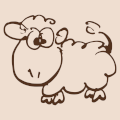Sheep Crossing — 6 of 18
Andrew Geng
Chapter - Objects
Section - Characters in general
An animal can be dead. An animal is usually not dead.
An animal can be suspicious. An animal is usually not suspicious.
An animal can be full. An animal is usually not full.
An animal can be vegetative. An animal is usually not vegetative.
An animal has a number called the eating priority. The eating priority of an animal is usually 100.
The can't take other people rule is not listed in the check taking rules.
The exclude people from take all rule is not listed in any rulebook.
The exclude people from drop all rule is not listed in any rulebook.
A corpse is a kind of thing.
Instead of doing anything except examining with a corpse (called the target), try examining the target.
Instead of searching or looking under a corpse (called the target), try examining the target.
Instead of inserting or putting or throwing or showing or giving or tying something to a corpse (called the target), try examining the target.
Rule for deciding the concealed possessions of animals: yes. [so that the player can't see the corpses]
Lifelessness relates one animal (called the former inhabitant) to one corpse.
The verb to be the late owner of implies the lifelessness relation.
When play begins:
repeat with the inhabitant running through animals:
repeat with the husk running through corpses carried by the inhabitant:
now the inhabitant is the late owner of the husk.
After examining a corpse (called the husk):
end the story saying "Grandmother will mourn the loss of [the former inhabitant of the husk]."
A person can be nauseated. A person is usually not nauseated.
A person can be guilty. A person is usually not guilty.
A person can be postbarf. A person is usually not postbarf.
Instead of searching or looking under an animal (called the suspect), try examining the suspect.
The gift count is a number that varies.
When play begins:
now the gift count is the number of animals that are not scenery; [should be 3]
